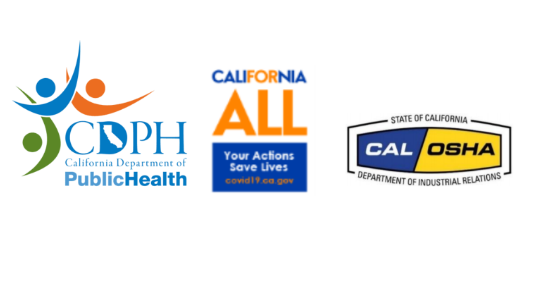Title Page
-
Conducted on
-
Prepared by
-
Location
Contents of Written Worksite Specific Plan
-
The person(s) responsible for implementing the plan.
-
A risk assessment and the measures that will be taken to prevent spread of the virus.
-
Training and communication with employees and employee representatives on the plan.
-
A process to check for compliance and to document and correct deficiencies.
-
A process to investigate COVID-cases, alert the local health department, and identify and isolate close workplace contacts of infected employees until they are tested.
-
Update the plan as necessary to prevent further cases.
Topics for Employee Training
-
Information on COVID-19, preventing spread, and who is especially vulnerable. <br>https://www.cdc.gov/coronavirus/2019-ncov/index.html
-
Self-screening at home, including temperature and/or symptom checks using CDC guidelines.<br>https://www.cdc.gov/coronavirus/2019-ncov/symptoms-testing/symptoms.html
-
The importance of not coming to work if employees have a frequent cough, fever, difficulty breathing, chills, muscle pain, headache, sore throat, the recent loss of taste or smell, or if they or someone they live with has been diagnosed with COVID-19.
-
When to seek medical attention.
-
The importance of hand washing.
-
The importance of physical distancing, both at work and off work time.
-
Proper use of cloth face covers
Individual Control Measures and Screening
-
Symptom screenings and/or temperature checks.
-
Encourage workers who are sick or exhibiting symptoms of COVID-19 to stay home.
-
Strongly recommend cloth face covers when employees are not required to wear respirators.
-
Provide and ensure employees use respirators to protect against airborne contaminants such as silica and asbestos.
-
Provide disposable gloves to workers using cleaners and disinfectants if required. Consider gloves a supplement to frequent hand washing for other cleaning, tasks such as handling commonly touched items or conducting symptom screening.
-
Communicate frequently to customers that they should use face masks/covers.
Cleaning and Disinfecting Protocols
-
Perform thorough cleaning in high traffic areas.
-
Frequently disinfect commonly used surfaces.
-
Avoid sharing phones, two-way radios, and other work tools and equipment.
-
Clean touchable surfaces between shifts or between users, whichever is more frequent.
-
Ensure that sanitary facilities stay operational and stocked at all times.
-
Make hand sanitizer and other sanitary items available and readily accessible..
-
Provide time for workers to implement cleaning practices before and after shifts.
-
Use products approved for use against COVID-19 on the Environmental Protection Agency (EPA)-approved list and follow product instructions and Cal/OSHA requirements.
-
Consider upgrades to improve air filtration and ventilation.
Physical Distancing Guidelines
-
Ensure physical distancing of at least six feet.
-
Adjust in-person meetings, if they are necessary, to ensure physical distancing.
-
Limit the number of workers on the job site to ensure at least six feet of separation.
-
Stagger employee breaks, in compliance with wage and hour regulations, to maintain physical distancing protocols.
-
Reconfigure, restrict or close break areas and provide alternative spaces where physical distancing can occur.
-
Avoid congregating during lunch and other breaks or before or after shifts.
-
Stagger team travel to sites and reduce the number of employees transported at a time to worksites.
Sign Off
-
Name and Signature
















